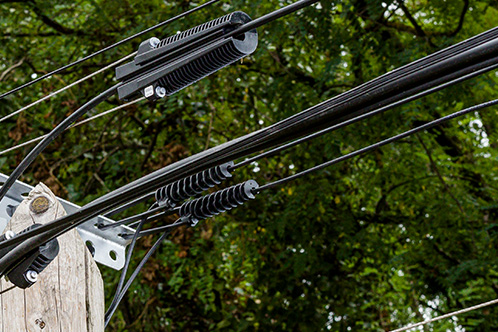Coutact Us
Whatsapp:+8618075108880
Email:info@ec-fibercable.com
Time:2023-03-09 16:05:06
Fiber optic cables are often used for long-distance communication due to their high bandwidth and low signal attenuation. Outdoor fiber optic cables are installed in harsh environments where they are exposed to various environmental factors such as temperature changes, humidity, moisture, dust, and physical stress. These environmental factors can damage the fiber optic cables and reduce their performance. Therefore, it is essential to take proper measures to protect the fiber optic cables from these environmental factors. In this article, we will discuss some of the common outdoor fiber optic cable line protection measures.

Cable Routing
The first step in protecting outdoor fiber optic cables is to properly route the cables. It is important to avoid any sharp bends or kinks in the cable, as this can damage the fiber optic strands. The cables should also be routed in a way that minimizes exposure to physical stress. For example, cables should not be routed near heavy machinery or in areas where there is a high likelihood of physical impact.
Cable Conduit
A cable conduit is a protective tube or pipe that is used to encase the fiber optic cable. The conduit can be made of various materials such as PVC, HDPE, or steel. The conduit provides protection against physical impact, moisture, and dust. Conduits can be buried underground or placed above ground. They can also be used to route the cables through areas where there is a high risk of physical damage, such as construction sites.
Cable Trays
Cable trays are used to support and protect the fiber optic cables. They are commonly used in industrial settings, such as manufacturing plants and warehouses. Cable trays are made of various materials such as steel, aluminum, or fiberglass. They provide protection against physical impact and can be used to route the cables above ground.
Cable Markers
Cable markers are used to identify the fiber optic cables and their location. They are important for maintenance and repair work, as they help technicians locate the cables quickly and easily. Cable markers can be made of various materials such as plastic or metal. They should be installed at regular intervals along the cable route.
Cable Protection Caps
Cable protection caps are used to protect the exposed ends of fiber optic cables. They are important in outdoor environments where the cables may be exposed to moisture or dust. The caps can be made of various materials such as plastic or rubber. They should be installed on all exposed cable ends.
Cable Armor
Cable armor is a protective layer that is added to the fiber optic cable. It is commonly used in high-risk areas, such as areas with high levels of physical stress. Cable armor can be made of various materials such as steel or aluminum. It provides additional protection against physical impact and can help prevent damage to the fiber optic strands.
Cable Trenching
Cable trenching is the process of digging a trench in the ground to bury the fiber optic cable. This provides protection against physical impact and exposure to moisture and dust. Trenching can be done manually or using machinery such as a backhoe. The trench should be deep enough to protect the cable from damage and should be backfilled with soil or gravel.
Cable Padding
Cable padding is used to protect the fiber optic cable from physical stress. It is commonly used in areas where the cable is routed through a conduit or cable tray. Padding can be made of various materials such as foam or rubber. It provides additional protection against physical impact and can help prevent damage to the fiber optic strands.
Cable Splicing Enclosures
Cable splicing enclosures are used to protect the fiber optic cable splices. The enclosures can be made of various materials such as plastic or metal. They provide protection against moisture, dust, and physical impact.